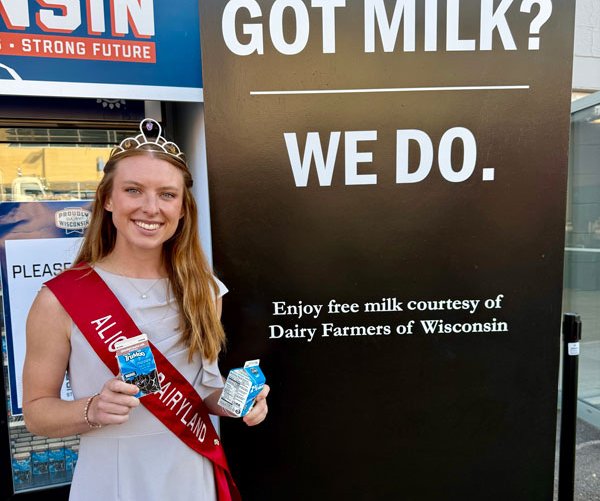Potatoes are one of the world’s most versatile crops, with a long history of cultivation in Wisconsin. While the first potato came to America around 1621, they were first cultivated around 200 B.C. Using technology developed by the University of Wisconsin-Madison, they were even the first food grown in outer space!
While the environment in space for those potatoes needed to be created, Wisconsin naturally has a suitable environment for producing top notch spuds. Our cool northern climate, quick spring warm-up, and sandy soils make Wisconsin a great place to grow potatoes. Knowing that, it is no surprise that Wisconsin ranks third in the nation for potato production, and first among states east of the Mississippi River. This production is centered in Wisconsin’s central sands region, so that is where I headed to experience potato harvest firsthand.
I traveled to Wysocki Produce Farm to tour their facility this October. Founded in the late 1950s by three brothers, Louis, Francis, and Greg Wysocki, Wysocki Family of Companies (WFC) began as a potato farm, which still exists today as Wysocki Produce Farm. The farm is still owned and operated by the family, with three generations actively involved in the business.
There are six varieties of potatoes grown in Wisconsin, which can be used for baking, mashing, microwaving, grilling, and more. Each variety has its own shape, color, texture, and taste. Wysocki Family of Companies grows three of those varieties each year, the most common being the russet potato. These are best for mashing, frying, or baked — one of my favorite meals at the Wisconsin State Fair.
Many people do not know that potatoes are actually a living, breathing organism. This is why potatoes are best kept in a cool, damp place to avoid sprouting. For home storage, potatoes should be stored in a well-ventilated cool, dry, and dark place, ideally between 45—55°F. Potatoes should not be stored at refrigerator temperatures because this can cause potato starches to convert to sugars, resulting in a sweeter taste and excessive darkening during cooking. Additionally, potatoes should not be washed by consumers before storing, as dampness promotes early spoilage.
In addition to being able to meet, talk with, and learn from potato producers like the Wysockis, I have also been fortunate enough to work with the Wisconsin Potato and Vegetable Growers Association (WPVGA) at various events. From a tour of the Spud Mobile at Farm Technology Days to learning the secrets of making the best baked potatoes at the Wisconsin State Fair, it is always fun to talk about (and taste) our special spuds.
Not only are those spuds delicious and versatile, but they are also loaded with nutrients! They are low in calories, high in fiber, and are a great source of vitamin B6, potassium, vitamin C and antioxidants. I have enjoyed finding new ways to enjoy potatoes with recipes from eatwisconsinpotatoes.com.
Whether you enjoy your potatoes alone or paired with other Wisconsin products, there is no such thing as a wrong way to indulge in Wisconsin potatoes!
— Taylor Schaefer is the 75th Alice in Dairyland, Wisconsin’s agriculture ambassador who works with media professionals to educate consumers about the importance of agriculture to Wisconsin’s economy and way of life. She can be reached at taylor.schaefer@wisconsin.gov.




